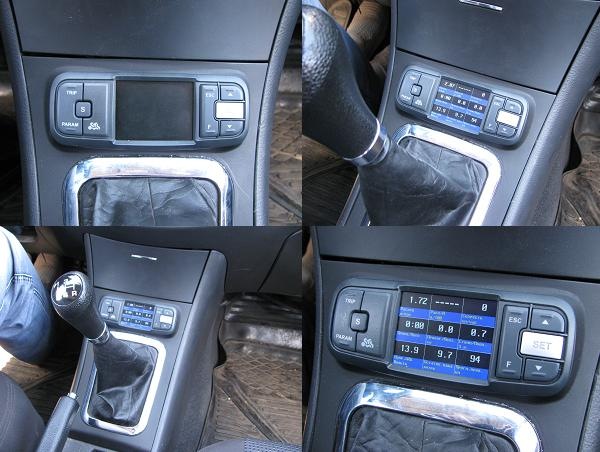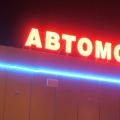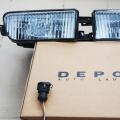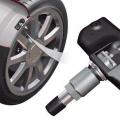Even some 40 years ago, people driving cars could not even imagine what the future of the automotive industry as a whole would hold. If earlier a person did things like troubleshooting on his own, now special electronics can do it for him. Today we will talk about on-board computers. What is an onboard computer? Varieties, main functions and capabilities.
What is called an on-board computer and what are its functions?
The on-board computer is a special device designed to perform computational operations based on data received from a wide variety of sensors located in important parts of the car.
Conventionally, all on-board computers can be divided into two classes:
- narrowly focused. These include computers capable of performing a specific function. For example, to measure fuel consumption, show the time and influence some electrical systems of the car.
- Universal. These include special devices that have the ability to access the Internet. With the help of them, you can determine your geographic coordinates, weather and receive various data about situations on the road.
Most modern computers perfectly combine a diagnostic scanner that looks for a malfunction in the electronic system and speeds up car repairs, as well as a trip computer that allows you to calculate fuel consumption and mileage. Some computers have a set of multimedia systems that allow them to play audio and DVD files. Thus, the on-board computer becomes a replacement for the radio and car radio.
The on-board computer can influence many parameters. For example, control the ignition system or injectors and many other systems that affect the economic and power performance of the engine.
Today there are computers that can be simply plugged into a 12-volt system and run like a normal PC. Not all drivers are aware of this.
Varieties of BC
- Route BC

It is the first on-board computer of a car, which began to be mass-produced in the 2000s. Of course, they appeared even much earlier, approximately, in the 70s on rally cars for the simplest calculations of the data from which all the parameters of the car's movement are added. But they began to be installed on production cars only in the 21st century. In addition, modern trip computers began to be equipped with a satellite navigation system, which not only provides information about the movement, but also displays information about the location, and even the terrain itself.
The main tasks of trip computers are considered to be:
- The time it took to complete a segment of the journey.
- Average movement speed.
- Mileage.
- Average fuel consumption.
- Total travel time.
- Shipping costs.
- Estimated time of arrival at the destination.
And this is not all the parameters of the device. Such computers, as a rule, have a character-alphabetic display of data. Modern computers may also include a small service scanner or even a control module.
- Service computer

In another way, it is called diagnostic, because its main functions include troubleshooting a car. A separate diagnostic computer is very, very rare, because it is gradually becoming only a function of the overall BC system. And the full list of functions of such a system includes:
General control of the electrical part of the car. These can be detected short circuits, current leaks, overvoltages, problems in lighting fixtures and any sensors.
- Monitoring and other elements subject to wear.
- Control over the level of any liquids. This can be engine oil, coolant, brake fluid, gearbox oil, gearboxes and other systems that need constant lubrication.
- Complete diagnostics of all vehicle systems, with the saving of the data obtained as a result of the test.
The device memory stores all the data about the presence of certain errors. On their basis, a special report is generated on the status of various vehicle systems and the need for appropriate repairs.
- control computer

A kind of ECU, or as it is also called, the main control unit. For the first time, an IBM computer was installed on BMW cars back in 1981. Such a computer has its own independent sensors and actuators, but most often, it is used in close cooperation with the car controller. Such a computer can affect the operation of the following systems and devices:
- Block designed to control an automatic transmission
- Control of electromagnetic valves (nozzles)
- The system responsible for the position of the ignition timing
- Systems responsible for climatic conditions
And this is not the whole list of functions. In addition to them, the computer can control, display and other equally important parameters. These include:
- Driving a car with an unfastened seat belt
- The amount of air consumed
- Value
- Speed
- coolant temperature
- Adjustment of electrical systems, for example, changing the voltage of the on-board network and the charging current of the battery
- Alarm indicating motor overheating
- Exceeding the speed limit
Trends in the development of on-board computers
Currently, manufacturers of digital systems tend to work in two directions - this is to combine all the functions of a computer into one, single system. Another direction is the creation of separate computers that will be responsible for specific tasks.
Of course, the integration of all systems makes it possible to simplify the installation of such devices and general vehicle diagnostics, allowing you to display the most accurate information about the controlled parameters. On the other hand, the use of separate computers will make it possible to install such a device even on those cars that do not provide for the installation of such systems at all, however, the number of functions will be limited.
However, the second type of computer is now spreading much faster than the first and is constantly being improved.




